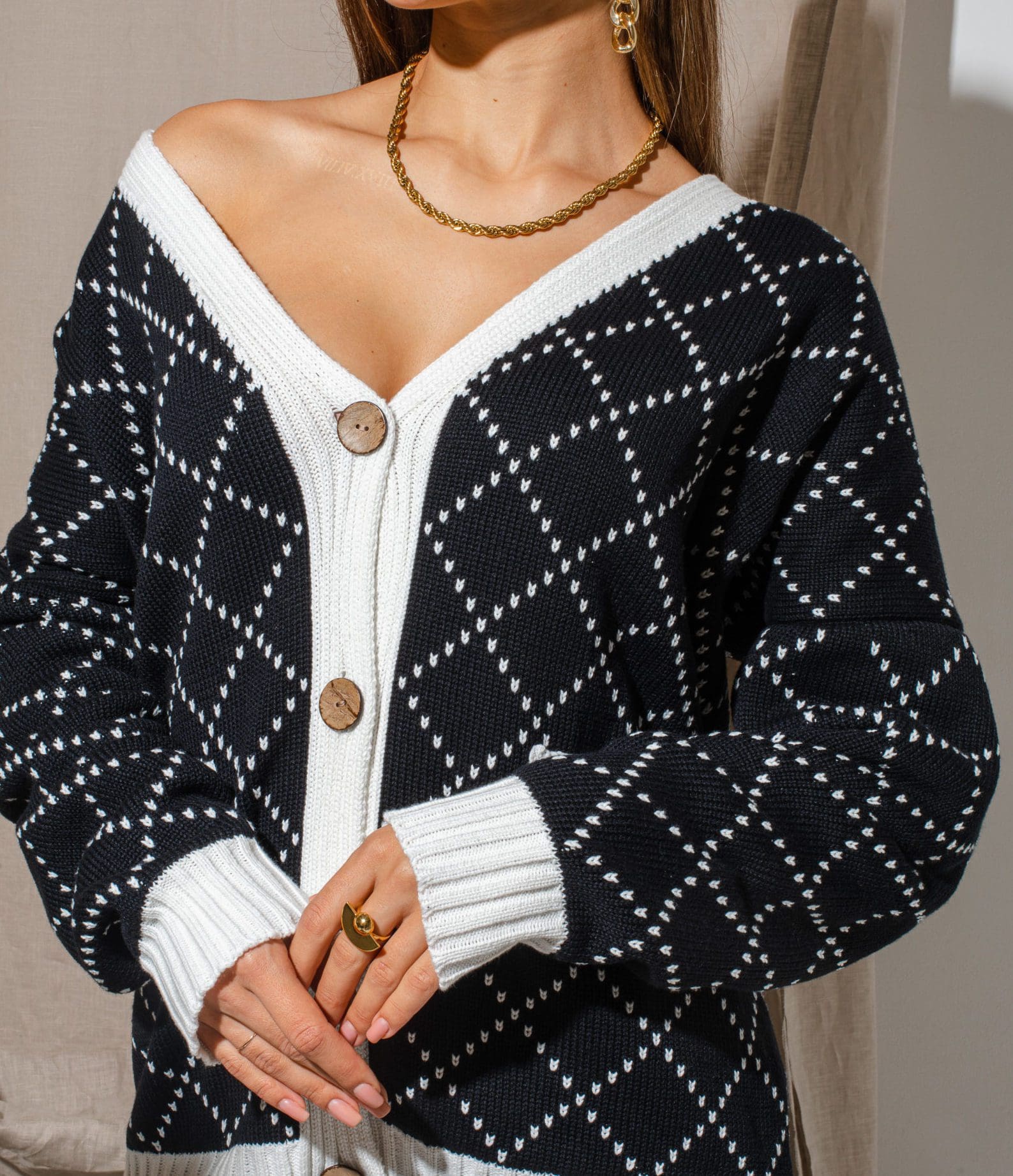
Dear Cardigan, how far you had to go to be (socially) accepted. Yes, the most common of sweaters carries with it historical and cultural baggage unknown to most, and which has cost the female sex not a few attacks and not a few criticisms and discriminations from the male sphere. Before it became a key wardrobe item, the cardigan was what theweek.com calls “a tool of rebellion” for women.
RELATED STORY.

Yay for cardigans, the coolest sweaters of the season
Naming early 20th century fashion also makes one think back to the rapid transformations to which women’s wardrobes were subjected in the first decades of the century. But, if there is a key moment in the history of the cardigan, it dates back to 1940, when female students at Smith College in New York and Wellesley College and Vassar College in Massachusetts began wearing them. Cardigans, baggy as they were, banished from men’s view the girls’ well-outlined silhouette: no more tightness, no more shapes within eye (and commentary) range. Inspired by those worn by students at U.S. Ivy League sports colleges, female students took great pride in wearing cardigans as a “sign of neglect”: dressing like a man did not make them equal to their male counterparts; on the contrary, it made them feel emancipated to the point where they could say they felt far more elevated in terms of thought. The cardigans of the 1940s soon took on the name Sloppy Joes and, as fashion historian Deirdre Clemente told the source, “what these women were trying to say was that they no longer wanted to adhere to set canons of femininity.” They were saying, in simple words, that from then on they would do it their way. Even at the cost of looking scruffy.
Creative Class of Milan: Carolina PecoraPlay Video

The feminist cardigan revolution began right from the 1940s in U.S. college colleges, where girls wore this somber cult favorite as a (conscious) form of negligence.
H. ARMSTRONG ROBERTS/CLASSICSTOCKGETTY IMAGES
ADVERTISEMENT – CONTINUE READING BELOW
RELATED STORY.

15 smart ways to wear a cardigan
The young women revolutionary women of the 1940s, true ante-litteram influencers, were called Sloppy Sues by the press. Again because of their feminist relationship with the cardigan, a 1947 article in Life even lamented a new habit that had become popular among female students: that of wearing jeans and baggy shirts. “Just like girls,” the magazine wrote, “who don’t care at all about wanting to look, precisely, like girls. Even earlier, in 1937, male students at Northwestern College criticized female students, accusing them of being “manifesting a disability.” More: again according to the same, the girls had to “look prettier to deserve their attention.” No further commentary will be needed to demonstrate the sexist reaction to women’s new favorite garment of the 1940s: “Society,” Deirdre Clement further explains, “believed it deserved access to women’s bodies, but the Sloppy Joes were obscuring that form of access for them. The fashionable (revolutionary) trend of the cardigan was unstoppable, and it returned again in the 1960s also coinciding with the infamous Anglo-Saxon Swinging Sixties : many women were now economically independent, living in their own apartments, and did not need marriage to assert their individuality. “They began to obscure their bodies again,” Deirdre Clement concludes, “as a new idea of femininity began to transpire. Indeed, it was no accident that in 1973 the cardigan made headlines in French newspapers and became a cult item among Parisian women: Kenzo and Chloé brought back the sophisticatedattire of 1940s schoolgirls, andUnited Press International declared, “The Sloppy Joe cardigan is back.” From then to now, never (again) leaving.